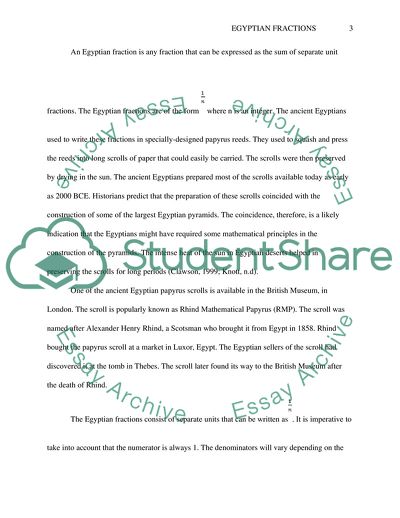The Counting System in Ancient Egypt Case Study Example | Topics and Well Written Essays - 3000 words. https://studentshare.org/mathematics/1827965-history-of-math-egyptian-fraction
The Counting System in Ancient Egypt Case Study Example | Topics and Well Written Essays - 3000 Words. https://studentshare.org/mathematics/1827965-history-of-math-egyptian-fraction.


